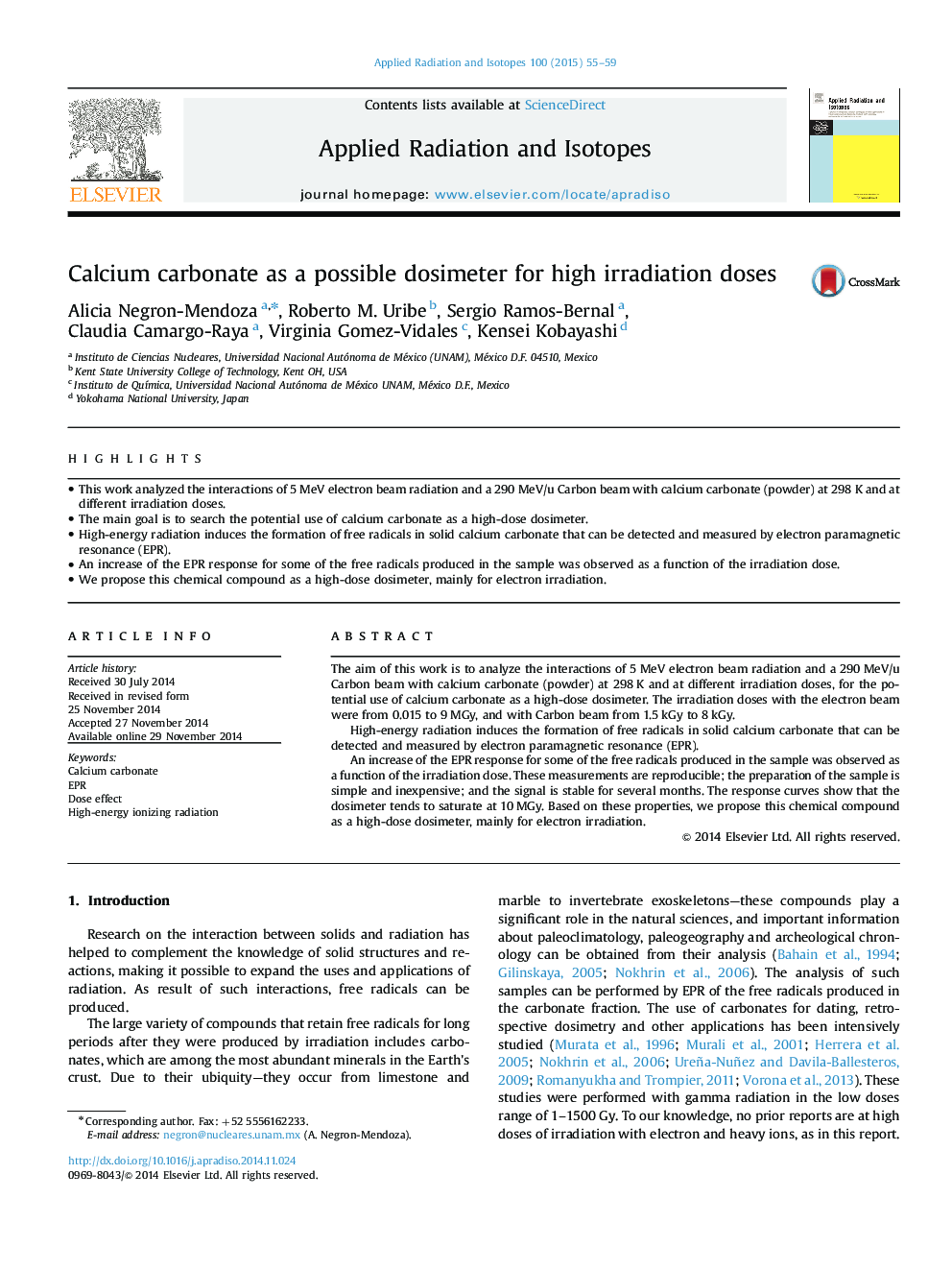| Article ID | Journal | Published Year | Pages | File Type |
|---|---|---|---|---|
| 1878986 | Applied Radiation and Isotopes | 2015 | 5 Pages |
•This work analyzed the interactions of 5 MeV electron beam radiation and a 290 MeV/u Carbon beam with calcium carbonate (powder) at 298 K and at different irradiation doses.•The main goal is to search the potential use of calcium carbonate as a high-dose dosimeter.•High-energy radiation induces the formation of free radicals in solid calcium carbonate that can be detected and measured by electron paramagnetic resonance (EPR).•An increase of the EPR response for some of the free radicals produced in the sample was observed as a function of the irradiation dose.•We propose this chemical compound as a high-dose dosimeter, mainly for electron irradiation.
The aim of this work is to analyze the interactions of 5 MeV electron beam radiation and a 290 MeV/u Carbon beam with calcium carbonate (powder) at 298 K and at different irradiation doses, for the potential use of calcium carbonate as a high-dose dosimeter. The irradiation doses with the electron beam were from 0.015 to 9 MGy, and with Carbon beam from 1.5 kGy to 8 kGy.High-energy radiation induces the formation of free radicals in solid calcium carbonate that can be detected and measured by electron paramagnetic resonance (EPR).An increase of the EPR response for some of the free radicals produced in the sample was observed as a function of the irradiation dose. These measurements are reproducible; the preparation of the sample is simple and inexpensive; and the signal is stable for several months. The response curves show that the dosimeter tends to saturate at 10 MGy. Based on these properties, we propose this chemical compound as a high-dose dosimeter, mainly for electron irradiation.
